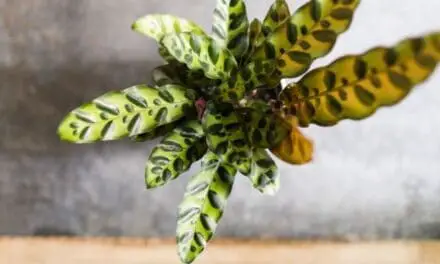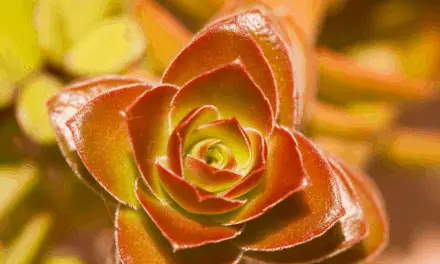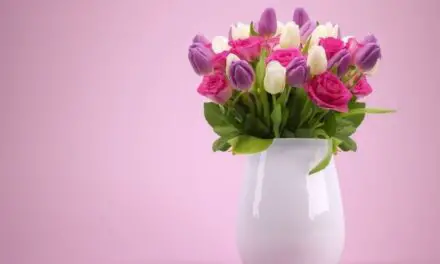A symbol of luck and prosperity throughout Asia, the jade plant is one of the easiest succulents to look after – provided you do a good job seeing to its needs for light and water.
And if for any reason you don’t see to those needs, your jade can begin to grow in unexpected ways.
Table of Contents
Why Are My Jade Plant Leaves Curling Down?

A jade plant’s leaves can begin to curl down when it is not being watered properly or receiving the right amount of light.
When these plants are getting enough water and light, their leaves are plump, firm, and can hold themselves up.
When these succulents aren’t getting the right amount of water or light, their leaves can lose their firmness and begin curling and growing in odd ways.
How To Fix Your Jade Plant’s Leaves Curling Down
If the leaves on your Jade plant are pointing down or otherwise not growing as they should, it is almost always going to be a light or watering issue.
Watering Issues
Overwatering can cause your Jade plant leaves to become mushy and curl down while underwatering can cause the leaves to dry out and droop.
Both issues require your attention but overwatering is much more likely to kill your plant.
If your jade plant is beginning to rot from overwatering, the excess water in the soil will be stopping it from taking in nutrients and moisture and if things don’t change, it will soon completely rot and die.
If your plant is rotting and waterlogged, you’ll have to lift it out from its pot, remove any black and rotting roots, dry the healthy roots and replant it into fresh soil.
Jade plants are drought-resistant succulents so underwatering is usually less of an issue.
Once you give a dry plant some water, it usually perks up within a couple of hours.
How To Tell If Your Jade Plant Is Being Watered Too Much Or Too Little
It can be difficult to tell whether your plant has been overwatered or underwatered just by looking at its stem and leaves.
The best way to know for sure is by checking the soil.
Test the top inch of soil in the pot with your finger and if it feels very dry then the plant has been underwater.
If the soil feels wet then your jade has most likely been overwatered.
Yellowing and mushy leaves are also a sure sign of overwatering.
Also, check your pot for drainage holes.
Water should be allowed to completely drain out of the soil so that it can dry between watering times.
If water is building up around your jade’s roots and not going anywhere, root rot will set in and your plant won’t last long.
How To Water Your Jade Plant Properly
These plants are succulents and they hold onto water in their plump, juicy leaves.
This allows jades to be quite tolerant of dry soil.
They like their soil to fully dry out between watering times.
A variety of factors can determine how quickly the soil will dry so it’s not a good idea to water these on his schedule.
Instead, test the top couple of inches of soil and when it feels quite dry, give the plant a deep drink of water.
When you test the soil, it should not stick to your fingers, it should be quite dry and crumbly.
If you feel any moisture within the soil at all, hold off for a couple of days and test again for dryness before watering.
Also Read: Why Is My Jade Plant Turning Purple?
Lighting Issues
Lack of sunlight can also cause your jade plant leaves to begin curling downward.
Your jade needs lots of direct light for its leaves to grow properly and evenly.
If it’s not receiving enough sunlight, growth will become elongated and leggy.
Some stems will grow more than others in an attempt to reach the light and some leaves can end up pointing downward.
A south-facing window where it gets a few hours of sunlight each day is usually where it will be happiest indoors.
Aim to give adult jade plants at least four to six hours of full sun each day.
Give younger developing plants less direct sun as they are a bit more fragile and prone to sunburn.
Red coloring on the leaves is a sign of sun stress and if you notice it you might want to move it back from the window a little.
And don’t forget to rotate your plant once in a while so that it receives an even amount of light.
Soil
As well as providing your jade plant the right amount of light and water, you’ll also want to ensure that it is planted in the right type of soil.
The soil should be loose and well-draining so that water can leave it and the roots can dry out.
Every month or so you should also rake up the soil to create more aeration for your jade’s roots.
You can use a sharp stick or a knife to loosen up the surface of the soil and stop it from becoming too compact.
Final Thoughts
If your jade plant’s leaves are curling down, it is most likely a watering or light issue.
Jades are some of the easiest plants to care for and as long as you give them enough bright light and let them dry out between watering, they should continue to flourish with little other maintenance.




